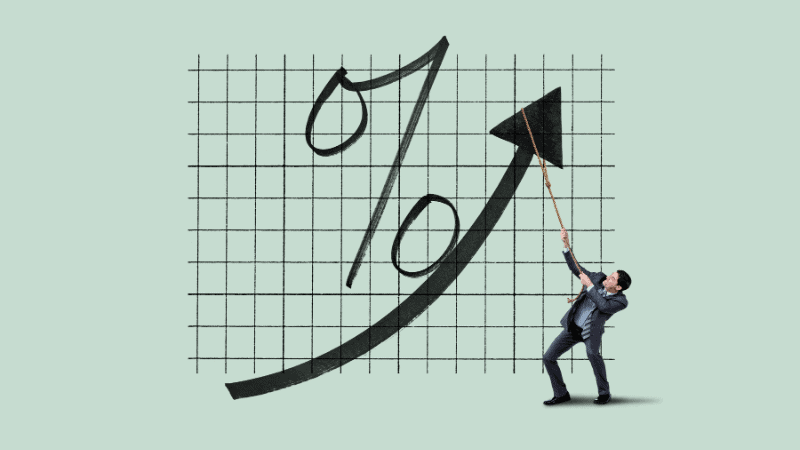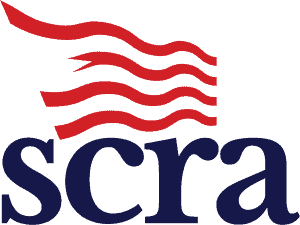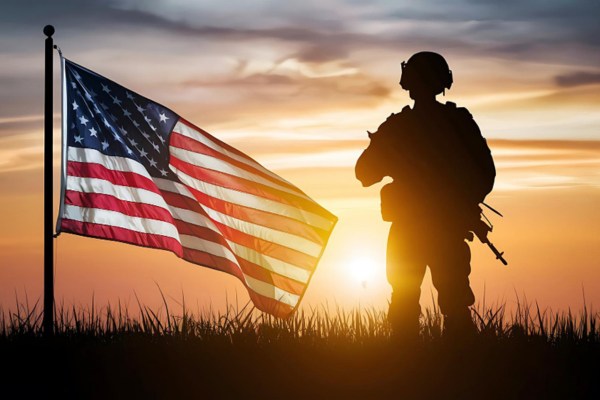SCRA Interest Rate Cap: Rights, Rules & Relief Explained

The Servicemembers Civil Relief Act was created to ease financial pressures for those in military service. Among its protections, the interest rate cap stands out as one of the most impactful safeguards.
With consumer loan rates climbing in 2025, that six percent ceiling has become more than a policy detail. It is a lifeline that shields active duty servicemembers and their families from excessive financial obligations at a time when their focus must remain on duty.
This guide explores who can claim the cap, what debts qualify, and how you can take the right steps to request relief. The goal is to give you clarity without overwhelming detail, so you better understand what this federal law offers.
Stay with us as we break down the rules and show how this protection can bring stability when needed most.
Contents
- 1 What Is the SCRA Interest Rate Cap?
- 2 Who Is Eligible for the Interest Rate Cap?
- 3 How to Request the Interest Rate Cap
- 4 What Types of Debt Qualify Under the SCRA?
- 5 What Does Not Qualify for SCRA Interest Rate Relief?
- 6 How Does the Cap Affect Credit Scores and Loan Terms?
- 7 What Is the Maximum APR Allowed for Military Members?
- 8 Lower Your Interest Rate – The Law Is on Your Side
- 9 FAQs
- 9.1 Does SCRA apply to personal loans?
- 9.2 What does not qualify for SCRA interest rate relief?
- 9.3 Do military personnel get lower interest rates?
- 9.4 Does SCRA apply to business loans?
- 9.5 Does SCRA apply to new loans?
- 9.6 What is the deadline for a servicemember to request an interest rate reduction?
- 9.7 What is the max APR for military?
What Is the SCRA Interest Rate Cap?
When a servicemember enters active duty, debts taken on before the date of service are treated differently under federal law. The interest rate cannot exceed six percent a year, no matter what the original loan terms were.
This rule, established in 50 U.S.C. § 3957, was written to prevent lenders from profiting unfairly while military members are away on duty.
The cap applies not only to the loan balance but also to fees and charges tied to the account. That means credit card companies, auto lenders, and banks must adjust both the rate and the way payments are calculated to reflect the reduced cost. For families managing bills during deployments or relocations, this safeguard can make the difference between staying ahead and falling behind.
To understand the effect, consider how it works with common debts. The savings add up quickly. Take a ten-thousand-dollar credit card balance at eighteen percent interest. Without SCRA protection, the yearly interest would reach about eighteen hundred dollars.
With the cap in place, the cost falls to six hundred. The twelve hundred saved could go toward groceries, child care, or housing, helping reduce the strain that comes with military service.
Who Is Eligible for the Interest Rate Cap?
Not every loan or borrower qualifies for the six percent interest rate cap, so it is important to know exactly who is covered under the Servicemembers Civil Relief Act.
The law is designed to support those in active service and certain related roles:
- Active duty servicemembers in the Army, Navy, Air Force, Marine Corps, and Coast Guard
- Reservists or National Guard members who are called to active duty for more than thirty consecutive days
- Commissioned officers in the Public Health Service or the National Oceanic and Atmospheric Administration
Alongside military status, timing matters. The debt must have been incurred before entering active duty. Any financial obligations created after active duty orders are received fall outside the scope of the interest rate reduction.
To make sure these protections are applied correctly, lenders need reliable proof of service. Verification can be obtained through the Defense Manpower Data Center or the Servicemembers Civil Relief Act Centralized Verification Service. This step protects servicemembers from excess interest while also helping creditors meet their legal obligations.
How to Request the Interest Rate Cap
1. Written Notice
To activate the SCRA interest rate cap, a servicemember must submit a written request to the creditor. This request formally notifies the lender that they are invoking protections under the Servicemembers Civil Relief Act.
The notice may be typed or handwritten, and many financial institutions also provide their own forms to make the process easier. What matters is that the request is clear, documented, and submitted in writing.
2. Proof of Military Service
Along with the written request, service members must provide proof of their active duty status. Creditors require documentation to confirm eligibility for the SCRA interest rate cap. Acceptable forms of proof include:
- A copy of official military orders showing the start of active duty service
- A verification certificate obtained through the Servicemembers Civil Relief Act Centralized Verification Service (SCRACVS)
- A signed letter from a commanding officer confirming active duty status
Submitting one of these documents ensures the request is valid and gives the creditor what they need to adjust the interest rate properly.
3. Timeline and Deadlines
Timing is critical when requesting the SCRA interest rate cap. The law requires servicemembers to submit their request no later than 180 days after leaving active duty. If the request is made within this window, the creditor must apply the reduced rate retroactively to the very first day of active duty service.
Missing the deadline can mean losing out on valuable relief. Many servicemembers overlook this requirement and end up paying excess interest that could have been forgiven.
Submitting the request early ensures the cap is applied correctly and prevents unnecessary financial strain during and after service.
What Types of Debt Qualify Under the SCRA?
The Servicemembers Civil Relief Act interest rate cap applies to a wide range of financial obligations, as long as the debt was taken on before entering active duty. Creditors are required to adjust these accounts once proper notice and proof of service are provided.
Qualifying debts include:
- Credit card debt where the account balance existed before active duty began
- Auto loans taken prior to receiving active duty orders
- Personal loans, which confirms that the SCRA does apply to personal loans if they were created before service
- Student loans, limited to certain federal loans originated before 2008
- Home equity loans or second mortgages in the servicemember’s name
- Business loans under a personal name, but not loans tied directly to a registered business entity
Conditions to keep in mind:
- Pre-service debt qualifies for the six percent interest rate cap. This means the loan or account must have been created before the servicemember entered active duty.
- Post-service debt does not qualify. Any loan, mortgage, or credit line opened after active duty orders are received is excluded from the interest rate reduction.
These distinctions are vital for both servicemembers and lenders. Recognizing what falls under the Civil Relief Act ensures military members receive the protections they are entitled to while helping creditors remain compliant with federal law.
What Does Not Qualify for SCRA Interest Rate Relief?
While the Servicemembers Civil Relief Act offers broad protections, not every debt is eligible for the six percent interest rate cap. Knowing what is excluded helps servicemembers avoid confusion and ensures lenders apply the rule correctly.
Ineligible debts include:
- Debts incurred during active duty — new loans taken out after entering service do not qualify for the cap.
- Business loans under LLCs or corporations — the protection does not extend to obligations tied directly to business entities.
- Joint accounts where the servicemember is not the primary borrower — if the servicemember’s name is not listed as the responsible party, the account is excluded.
- Variable-rate mortgages modified during active duty — if the terms were adjusted while in service, the new rate structure is not covered.
It is also important to clarify that the SCRA does not reduce rates on current obligations. Instead, it protects only debts incurred before active duty begins.
SCRA Interest Rate Cap Eligibility Chart
| Loan / Debt Type | Eligible Under SCRA? | Notes |
|---|---|---|
| Credit card debt (pre-service) | Yes | Balance must exist before active duty begins |
| Auto loans (pre-service) | Yes | Covers loans taken before receiving active duty orders |
| Personal loans (pre-service) | Yes | Applies only if the loan originated prior to active duty |
| Student loans (federal, pre-2008) | Yes | Older federal loans may qualify; newer ones generally do not |
| Home equity loans / second mortgages | Yes | If taken before active duty |
| Business loans under a servicemember’s name | Yes | Only if the debt is personal, not tied to a business entity |
| Business loans under an LLC or a corporation | No | Entity-held loans are excluded |
| Debts incurred during active duty | No | New loans opened after service begins are not protected |
| Joint accounts (servicemember not primary) | No | Must be in a servicemember’s name to qualify |
| Variable-rate mortgages modified in service | No | Adjustments made while serving are not covered |
How Does the Cap Affect Credit Scores and Loan Terms?
One concern servicemembers often raise is whether using the SCRA interest rate cap will harm their credit history.
The answer is no. Because this protection is written into federal law, creditors cannot treat the reduced interest rate as a sign of delinquency or report it as negative activity on a credit file.
In some cases, lenders may adjust payment terms to reflect the reduced rate. This can include extending due dates or restructuring the repayment schedule so the account remains manageable during deployments or training. These adjustments are intended to ease financial obligations, not penalize the borrower.
There can also be a positive effect on long-term credit health. With lower interest charges, monthly payments become easier to meet, which reduces the chance of missed or late payments. Data from NerdWallet highlights that active duty members who make use of SCRA benefits often maintain healthier credit utilization compared to peers who do not claim the cap.
What Is the Maximum APR Allowed for Military Members?
Federal law sets strict limits on the amount of interest military members can be charged, but the protections come from two different statutes.
Under the Servicemembers Civil Relief Act, the cap is six percent APR on debts incurred before entering active duty. This safeguard applies for the entire period of service and ensures that financial obligations do not grow faster than a military household can handle.
The Military Lending Act provides another layer of protection. It sets a thirty-six percent Military Annual Percentage Rate cap on certain forms of consumer credit, including payday loans, vehicle title loans, and some high-cost installment loans. Unlike the SCRA, the MLA applies to debts taken out while on active duty.
To avoid confusion, here is a side-by-side comparison of how the two protections differ:
| Law | Maximum APR | Applies To | Timing |
|---|---|---|---|
| SCRA | 6% | Pre-service debts (credit cards, auto loans, personal loans, mortgages, some student loans) | Debt must exist before active duty begins |
| MLA | 36% (Military APR) | Certain consumer credit products (payday loans, vehicle title loans, and some installment loans) | Loans taken while on active duty |
Lower Your Interest Rate – The Law Is on Your Side
The Servicemembers Civil Relief Act does more than set rules on paper. It gives you the chance to lighten the load of debt while you serve, so your focus stays on duty and family rather than rising balances. The six percent interest rate cap is not automatic, but once you request it and provide proof, the law requires creditors to honor it.
Taking the next step is simple. Confirm your active duty status through the Servicemembers Civil Relief Act Centralized Verification Service (SCRACVS). Share that verification with your lender, landlord, or credit issuer, and you have official proof that unlocks your protections.
Start your verification today and make sure the relief you have earned is working for you.
FAQs
Does SCRA apply to personal loans?
Yes. The Servicemembers Civil Relief Act applies to personal loans if they were incurred before active duty service began. Once a servicemember enters active duty, those pre-service debts become eligible for the six percent interest rate cap. Creditors must adjust the account upon receiving proper written notice and proof of military status, such as active duty orders or verification from SCRACVS. This protection helps service members, reservists called to duty, and even military spouses better manage financial obligations while fulfilling military duties.
What does not qualify for SCRA interest rate relief?
The SCRA interest rate reduction only applies to pre-service debts. New loans taken out after entering active duty are excluded, as are business loans held under corporations or LLCs. Joint accounts where the servicemember is not the primary borrower also do not qualify, along with variable-rate mortgages modified during service. These exclusions make it important for active duty service members to know exactly which debts are covered so they can provide creditors with proper notice and avoid excess interest.
Do military personnel get lower interest rates?
Yes, under the Servicemembers Civil Relief Act, qualifying pre-service debts must be reduced to six percent APR for active duty servicemembers. This interest rate cap is mandated by federal law and covers obligations such as credit card debt, auto loans, and personal property loans. In addition, the Military Lending Act provides protections for new consumer loans during active service, setting a maximum military APR of thirty-six percent. Together, these laws ensure military members and their families are not burdened with unfair financial obligations while serving.
Does SCRA apply to business loans?
The Civil Relief Act applies only to debts under a servicemember’s personal name, which means most business loans are excluded. If the loan was taken under an LLC or corporate entity, it does not qualify for SCRA benefits. However, if a business loan was signed personally by a servicemember before entering active duty, it may be eligible for the six percent interest rate cap. Creditors must receive proper notice along with proof of active duty status before applying the reduction.
Does SCRA apply to new loans?
No. One of the most common misunderstandings is that the SCRA interest rate cap applies to all debts. In reality, only obligations incurred prior to entering active duty are eligible. Any new personal loans, credit card balances, or installment loans created after the servicemember is called to active duty are not covered. Lenders must receive written notice along with military orders or SCRACVS verification to apply the cap. This rule prevents confusion and ensures the law protects only pre-service debts.
What is the deadline for a servicemember to request an interest rate reduction?
The Servicemembers Civil Relief Act requires servicemembers to submit their written request no later than 180 days after leaving active duty. If the notice is provided within that time, creditors must apply the six percent interest rate cap retroactively to the first day of service. Many service members miss out on these protections due to late submissions, which is why legal assistance offices often encourage filing early. Timely requests safeguard military members from excess interest and ensure compliance by creditors.
What is the max APR for military?
The maximum APR depends on the type of debt and the law that applies. Under the SCRA, pre-service debts cannot exceed six percent APR during active duty military service. Under the Military Lending Act, certain consumer credit products such as payday loans, auto title loans, and installment loans are capped at thirty-six percent Military APR. Understanding the difference between these two federal laws helps servicemembers and family members know their rights and request the correct interest rate reduction.






